
Mautic is the world’s largest open source marketing automation project. Mautic empowers businesses by making it easy to manage their marketing across a range of channels. One of the goals of Mautic is to provide professional Marketing Automation for small businesses. In this step by step guide I will show you how to install Mautic on your Synology NAS using Docker and Portainer.
This guide works perfectly with the latest Mautic v6.0.3 release.
STEP 1
Please Support My work by Making a Donation.
STEP 2
Install Portainer using my step by step guide. If you already have Portainer installed on your Synology NAS, skip this STEP. Attention: Make sure you have installed the latest Portainer version.
STEP 3
Make sure you have a synology.me Wildcard Certificate. Follow my guide to get a Wildcard Certificate. If you already have a synology.me Wildcard certificate, skip this STEP.
STEP 4
Go to Control Panel / Login Portal / Advanced Tab / click Reverse Proxy. Follow the instructions in the image below.
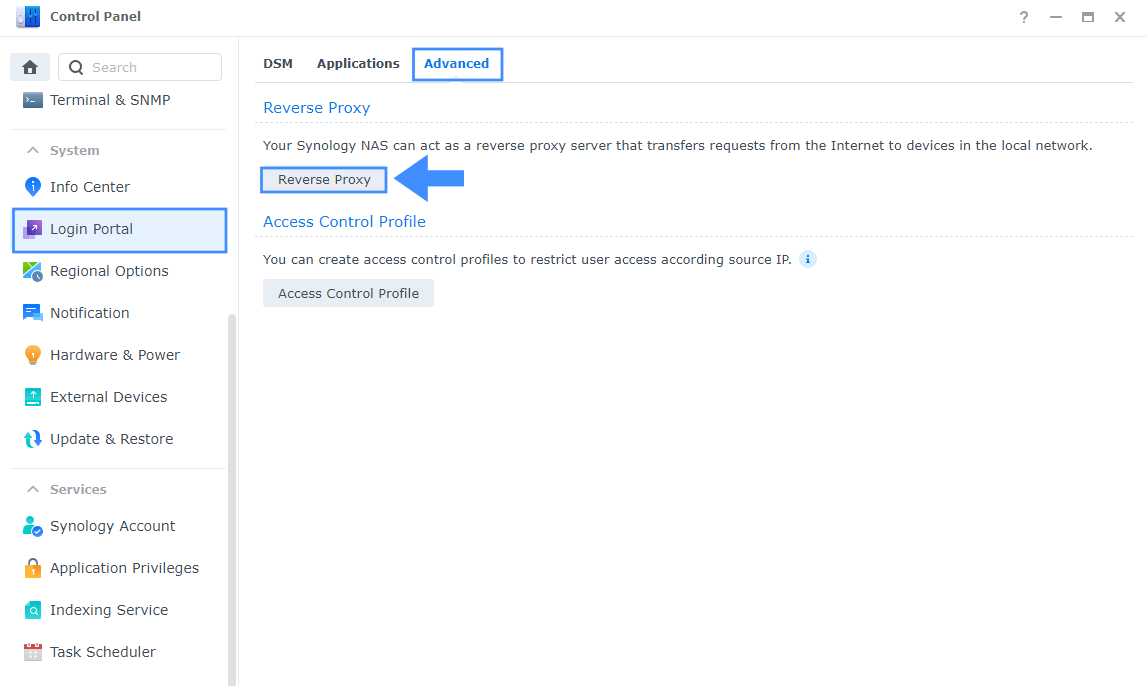
STEP 5
Now click the “Create” button. Follow the instructions in the image below.
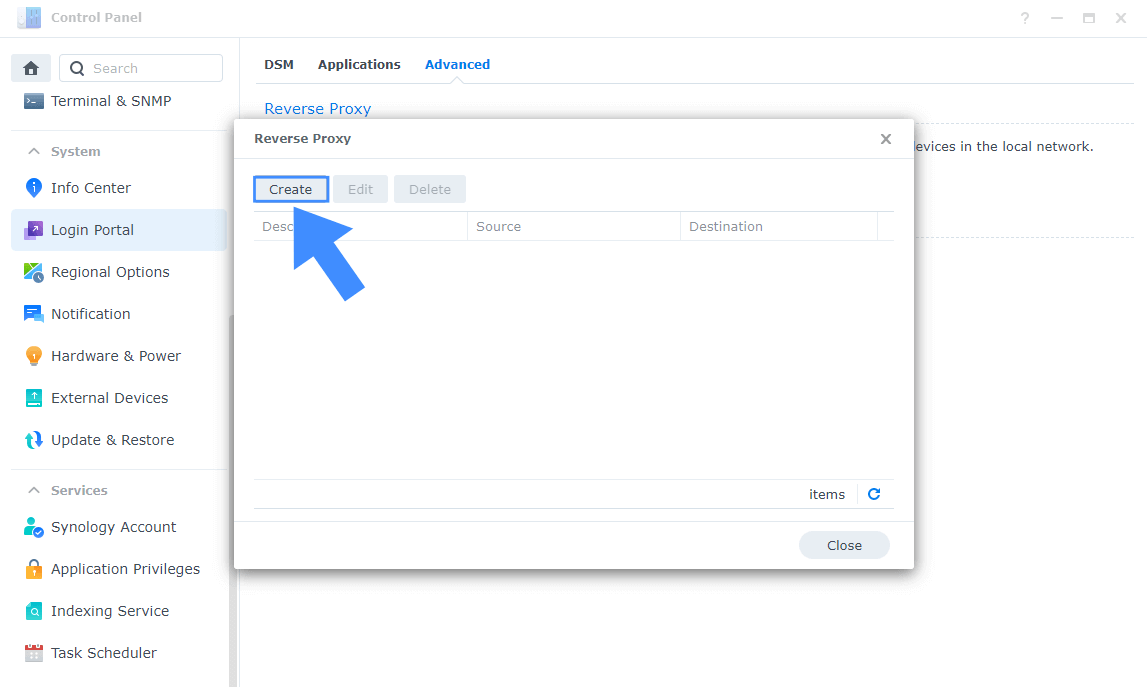
STEP 6
After you click the Create button, the window below will open. Follow the instructions in the image below.
On the General area, set the Reverse Proxy Name description: type in Mautic. After that, add the following instructions:
Source:
Protocol: HTTPS
Hostname: mautic.yourname.synology.me
Port: 443
Check Enable HSTS
Destination:
Protocol: HTTP
Hostname: localhost
Port: 9855
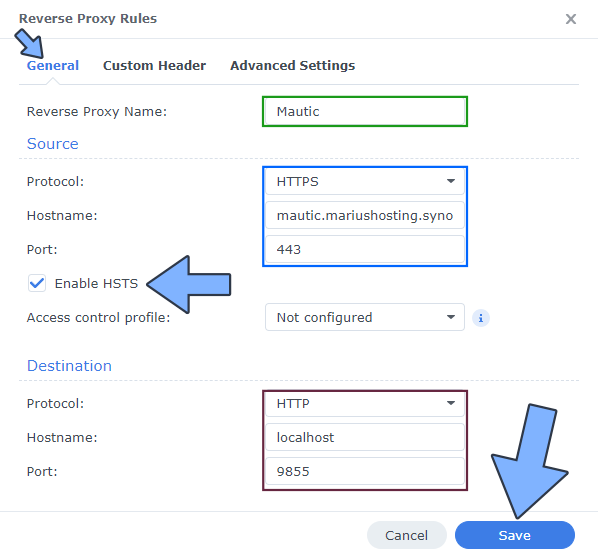
STEP 7
On the Reverse Proxy Rules click the Custom Header tab. Click Create and then, from the drop-down menu, click WebSocket. After you click on WebSocket, two Header Names and two Values will be automatically added. Click Save. Follow the instructions in the image below.
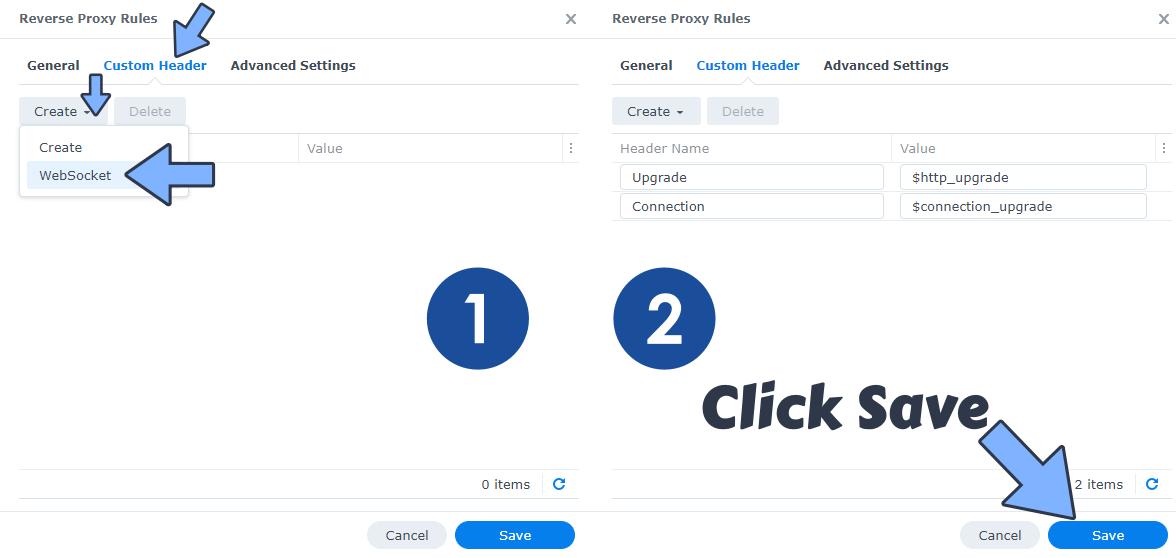
STEP 8
Go to Control Panel / Network / Connectivity tab/ Check Enable HTTP/2 then click Apply. Follow the instructions in the image below.
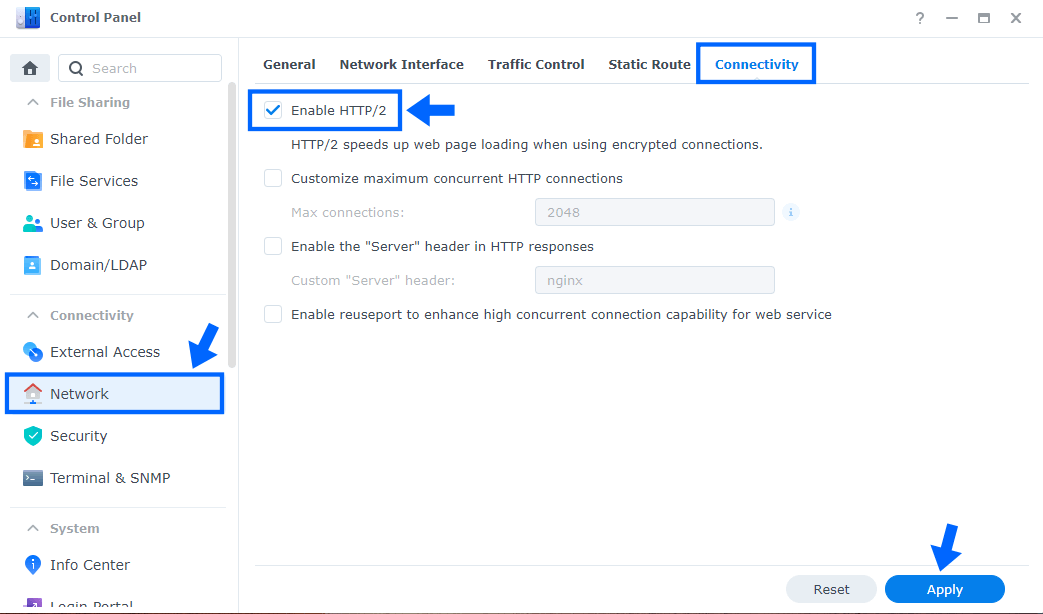
STEP 9
Go to Control Panel / Security / Advanced tab/ Check Enable HTTP Compression then click Apply. Follow the instructions in the image below.
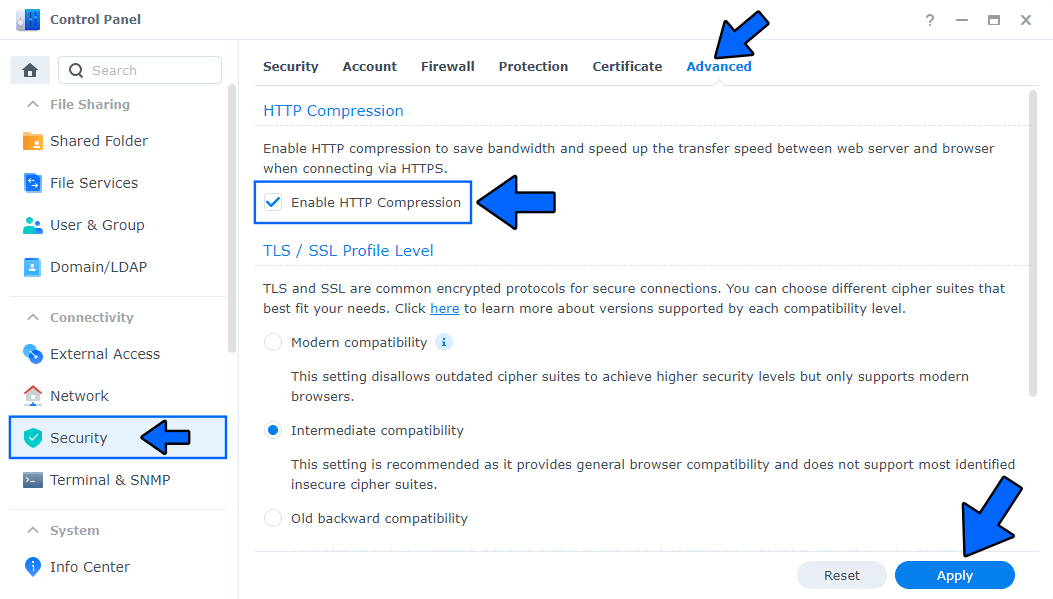
STEP 10
Go to File Station and open the docker folder. Inside the docker folder, create one new folder and name it mautic. Follow the instructions in the image below.
Note: Be careful to enter only lowercase, not uppercase letters.
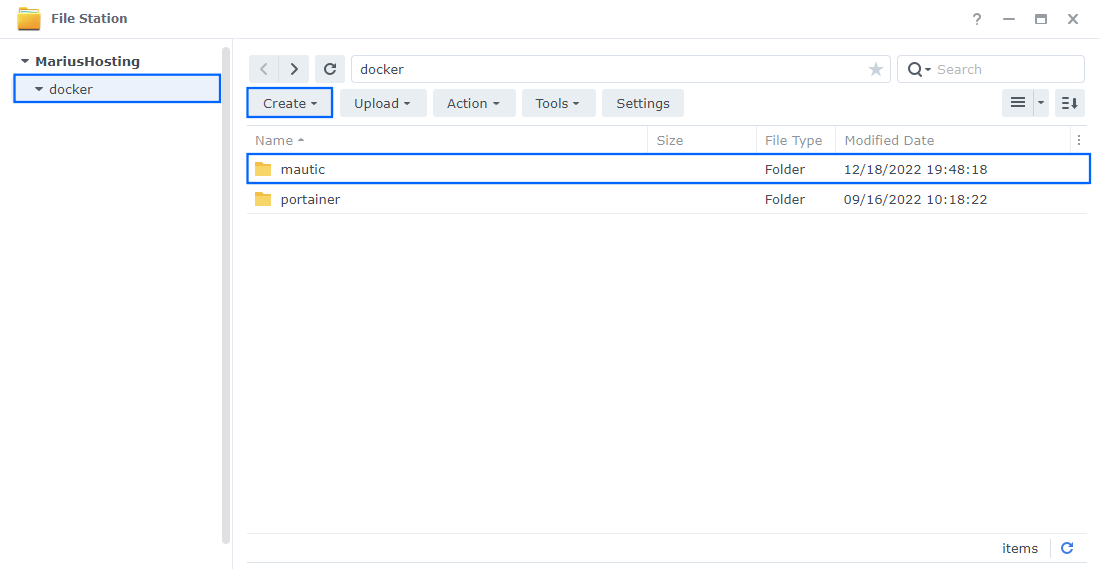
STEP 11
Now create two new folders inside the mautic folder that you created at STEP 10 and name them data and db. Follow the instructions in the image below.
Note: Be careful to enter only lowercase, not uppercase letters.
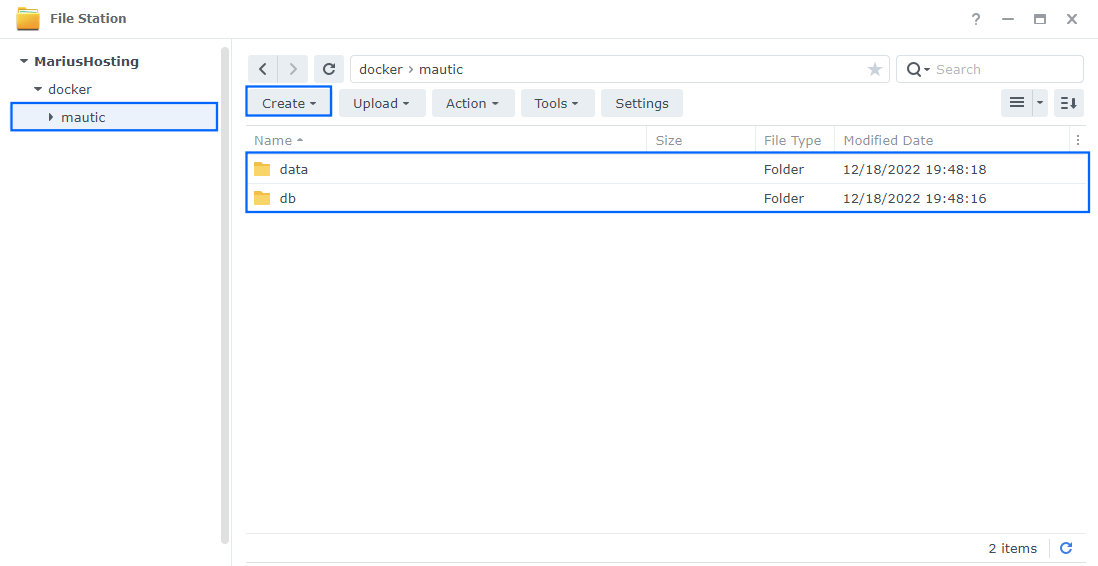
STEP 12
Download (click on the blue link below) and upload the my.cnf file below in the db folder that you have previously created at STEP 11. Follow the instructions in the image below. 🔒Note: Support my work to unlock the password. You can use this password to download any file on mariushosting forever!
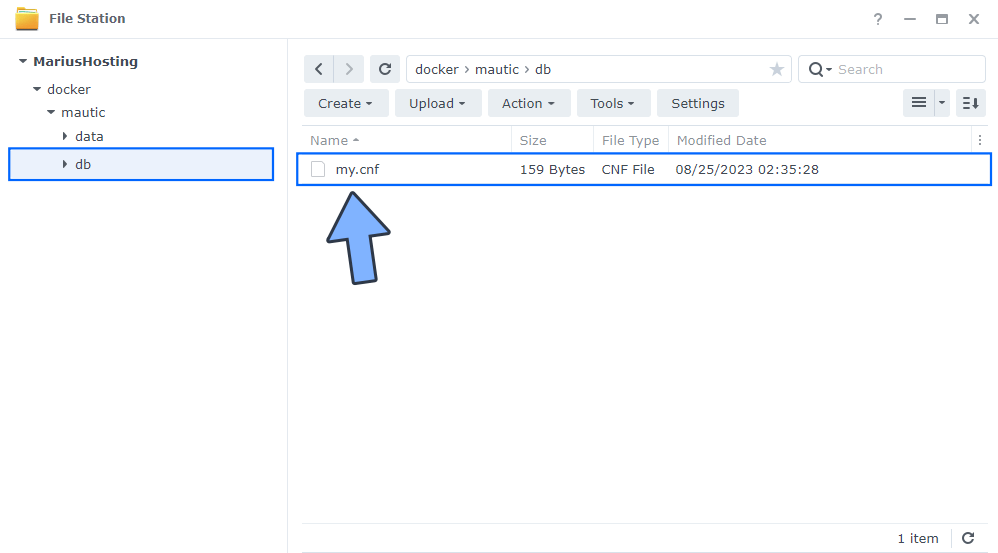
STEP 13
Log into Portainer using your username and password. On the left sidebar in Portainer, click on Home then Live connect. Follow the instructions in the image below.
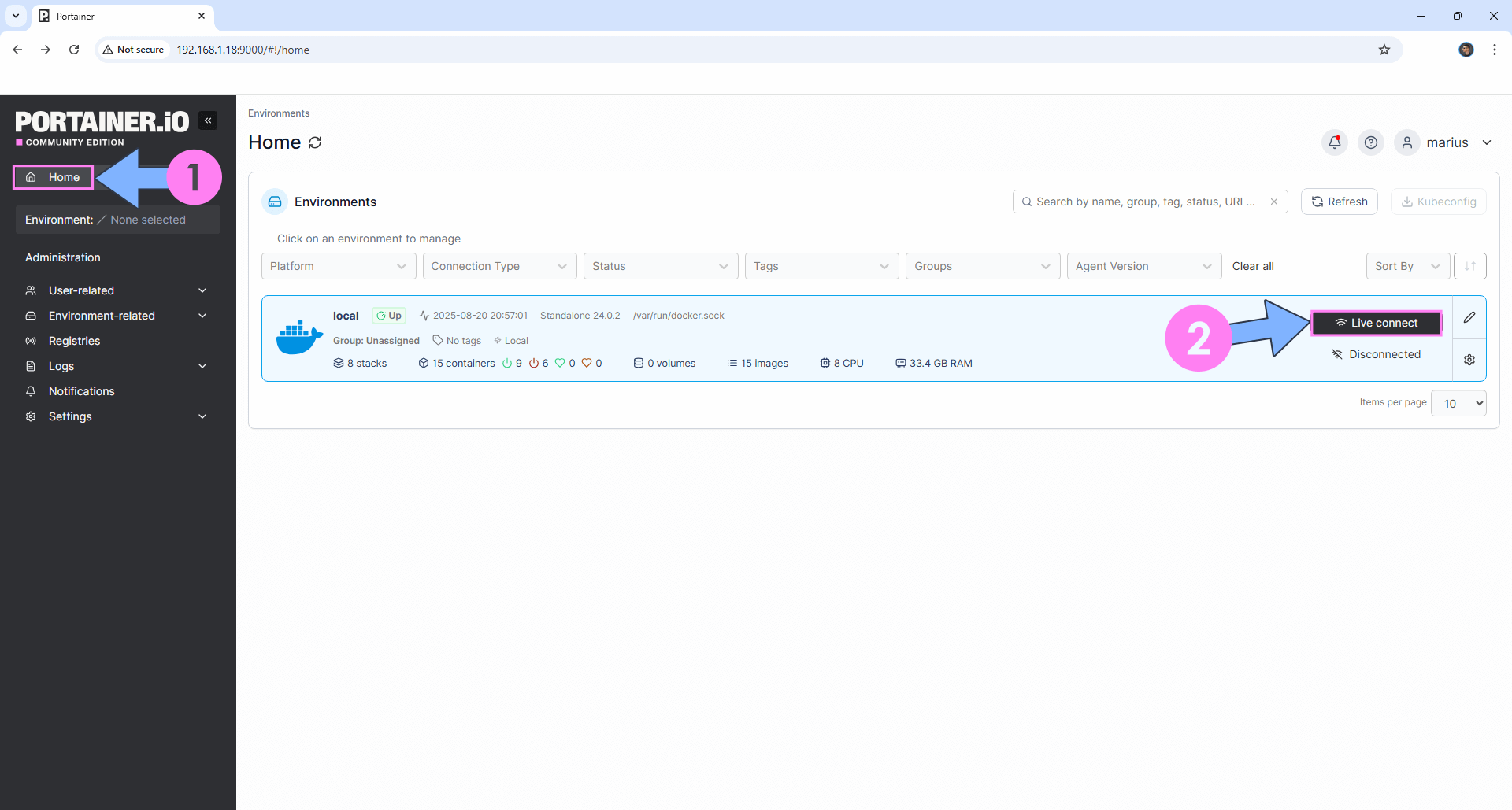
On the left sidebar in Portainer, click on Stacks then + Add stack. Follow the instructions in the image below.
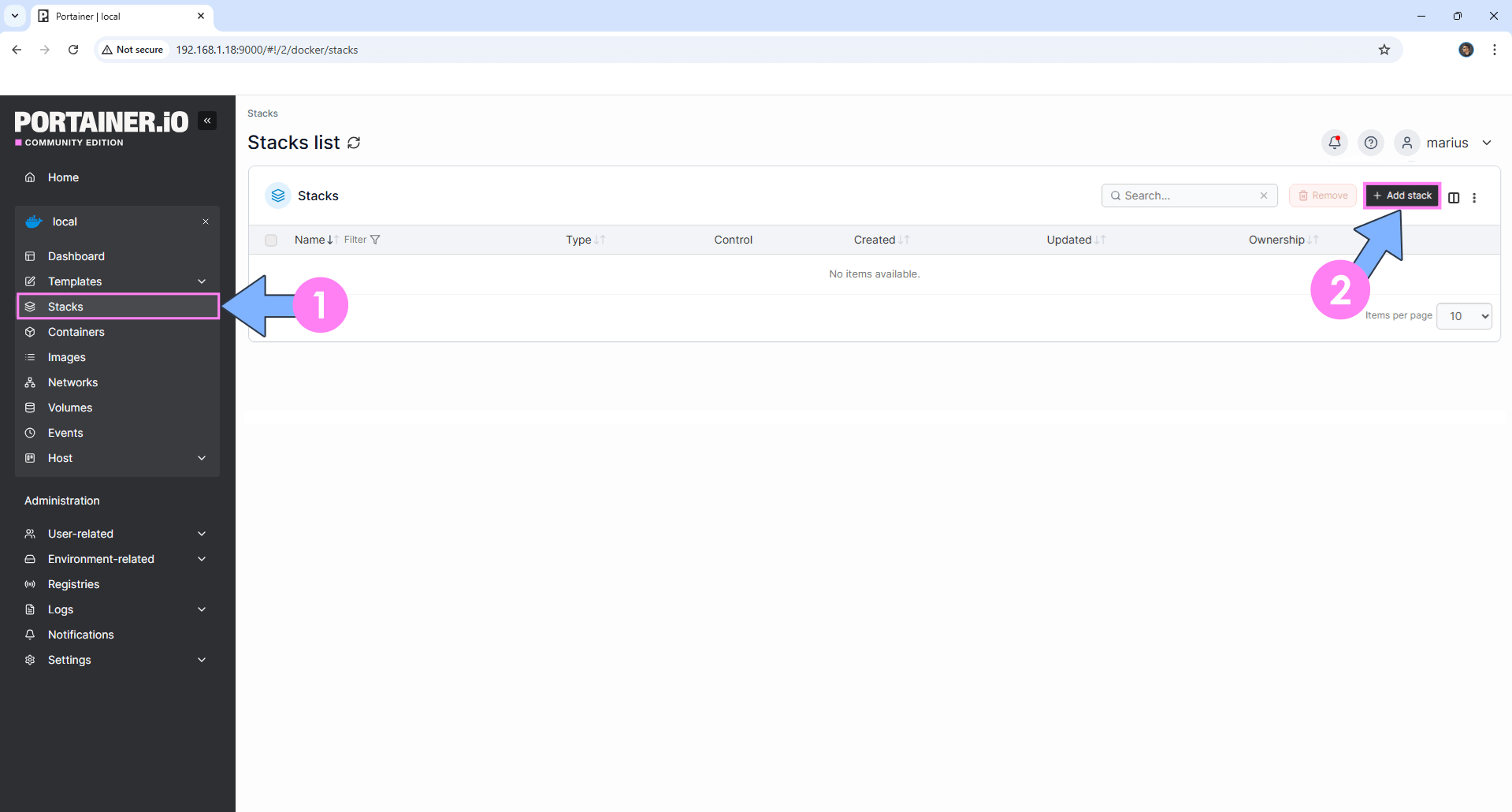
STEP 14
In the Name field type in mautic. Follow the instructions in the image below.
services:
db:
image: mariadb:11.4-noble #LTS Long Time Support Until May 29, 2029.
container_name: Mautic-DB
hostname: mautic-db
security_opt:
- no-new-privileges:true
environment:
- TZ=Europe/Bucharest
- MYSQL_ROOT_PASSWORD=rootpass
- MYSQL_DATABASE=mautic
- MYSQL_USER=mauticuser
- MYSQL_PASSWORD=mauticpass
volumes:
- /volume1/docker/mautic/db:/var/lib/mysql:rw
- /volume1/docker/mautic/db:/etc/mysql/conf.d:rw
restart: on-failure:5
mautic:
image: mautic/mautic:v4
container_name: Mautic
hostname: mautic
security_opt:
- no-new-privileges:true
healthcheck:
test: wget --no-verbose --tries=1 --spider http://localhost:80/ || exit 1
ports:
- 9855:80
environment:
- MAUTIC_DB_HOST=mautic-db
- MAUTIC_DB_USER=mauticuser
- MAUTIC_DB_PASSWORD=mauticpass
- MAUTIC_DB_NAME=mautic
- MAUTIC_RUN_CRON_JOBS=true
volumes:
- /volume1/docker/mautic/data:/var/www/html:rw
restart: on-failure:5
depends_on:
db:
condition: service_started
Note: Before you paste the code above in the Web editor area below, change the value for TZ. (Select your current Time Zone from this list.)
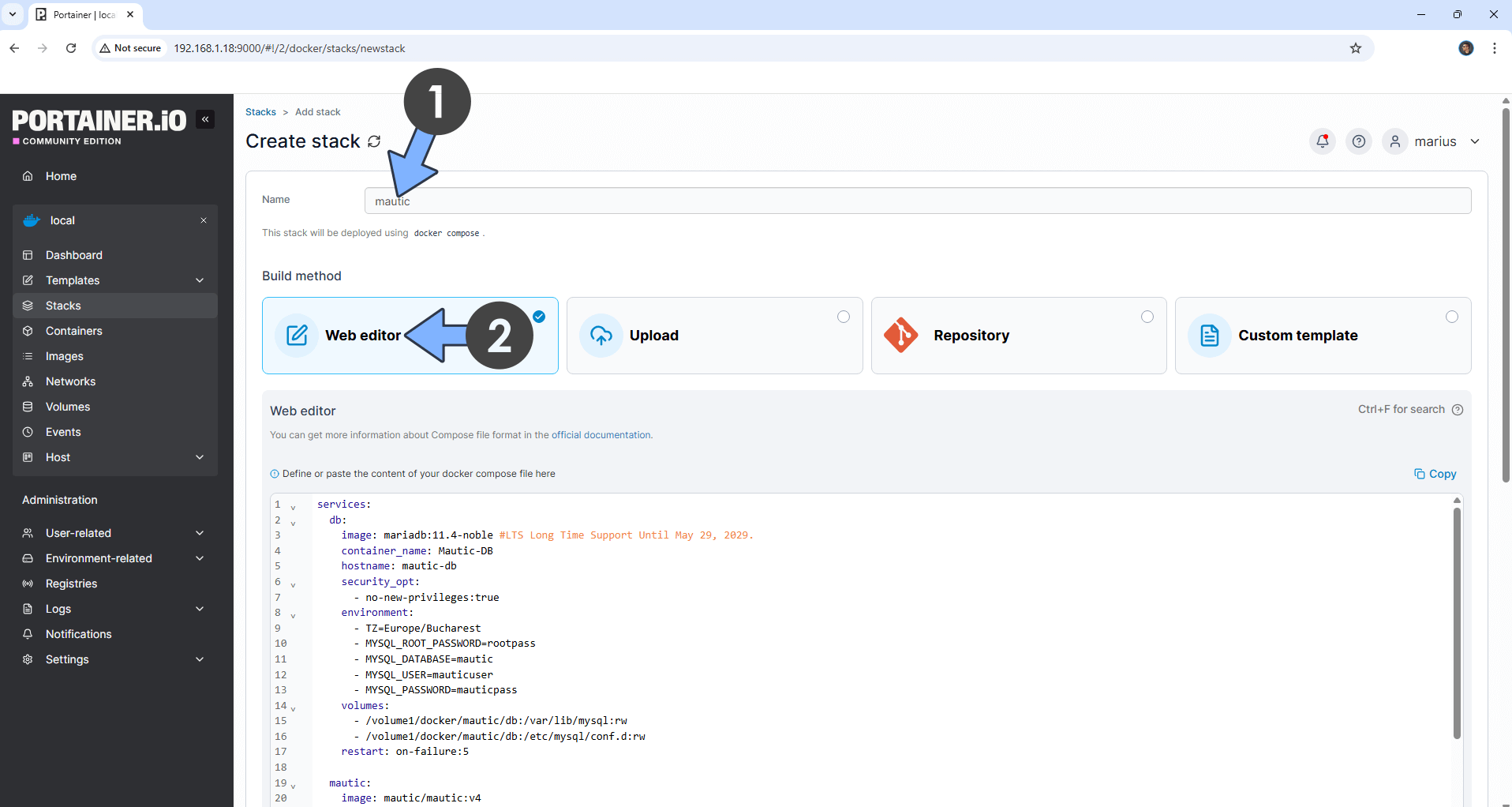
STEP 15
Scroll down on the page until you see a button named Deploy the stack. Click on it. Follow the instructions in the image below. The installation process can take up to a few minutes. It will depend on your Internet speed connection.
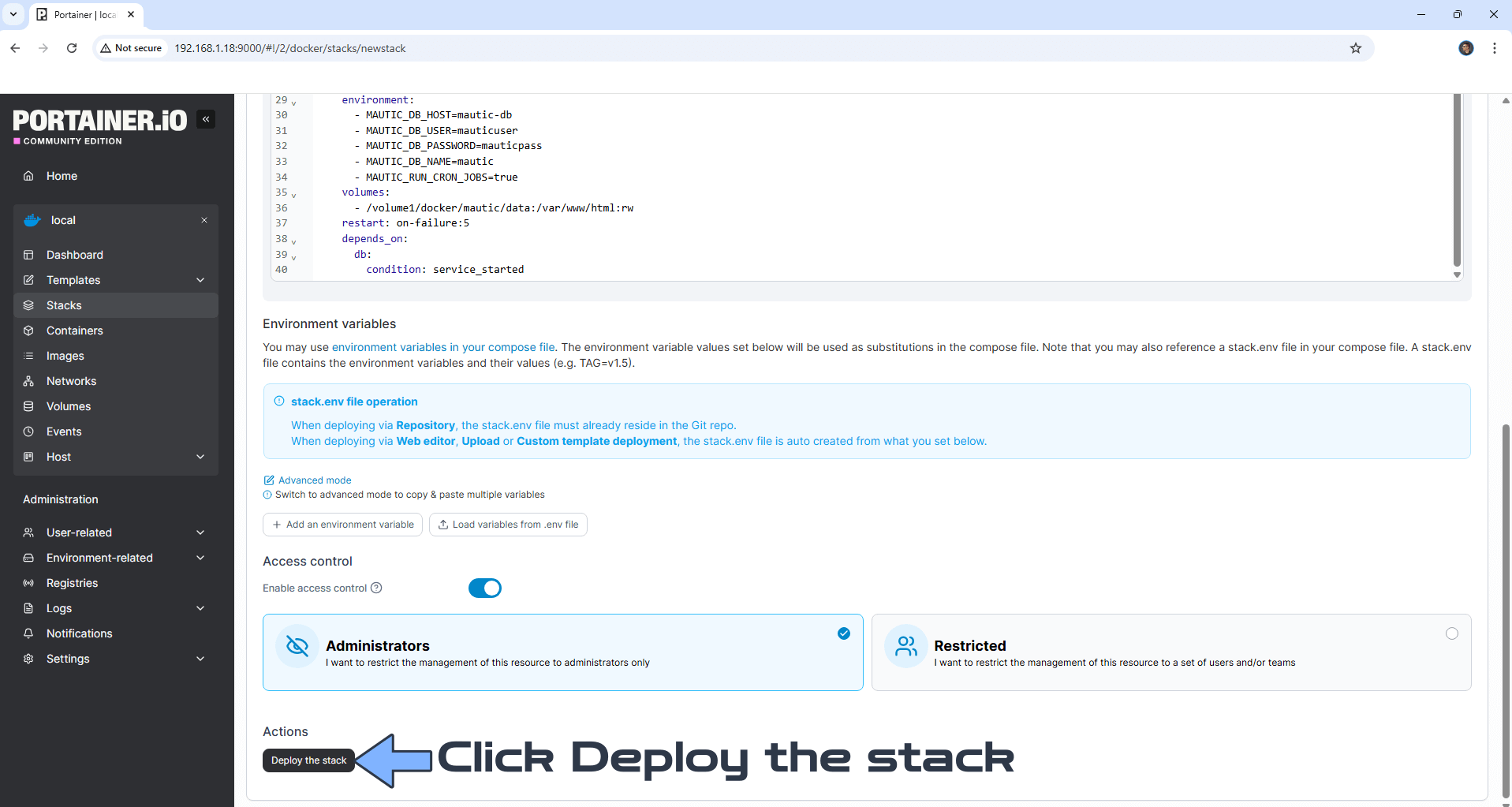
STEP 16
If everything goes right, you will see the following message at the top right of your screen: “Success Stack successfully deployed“.
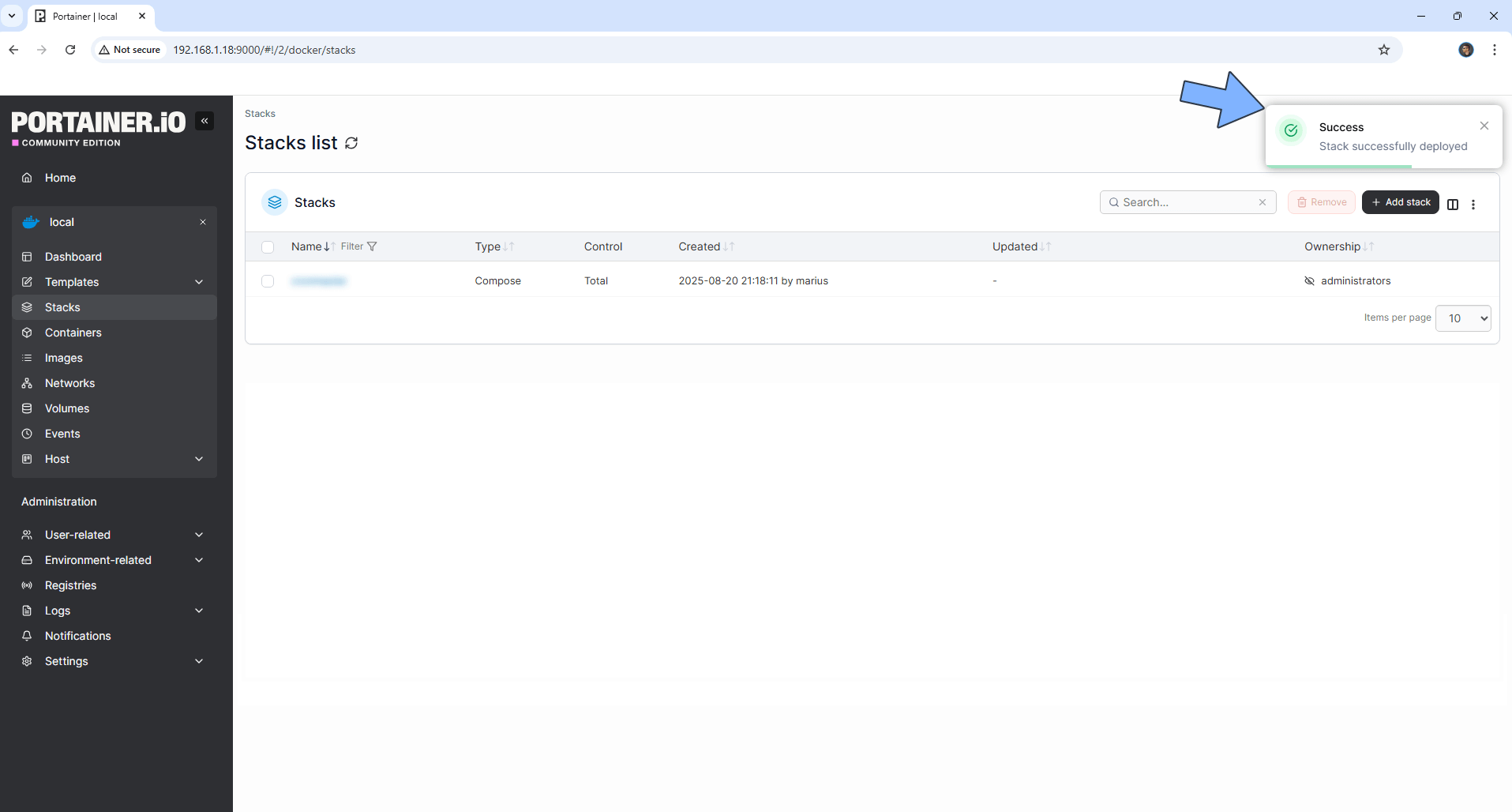
STEP 17
🟢Please Support My work by Making a Donation. Almost 99,9% of the people that install something using my guides forget to support my work, or just ignore STEP 1. I’ve been very honest about this aspect of my work since the beginning: I don’t run any ADS, I don’t require subscriptions, paid or otherwise, I don’t collect IPs, emails, and I don’t have any referral links from Amazon or other merchants. I also don’t have any POP-UPs or COOKIES. I have repeatedly been told over the years how much I have contributed to the community. It’s something I love doing and have been honest about my passion since the beginning. But I also Need The Community to Support me Back to be able to continue doing this work.
STEP 18
Now open your browser and type in your HTTPS/SSL certificate like this https://mautic.yourname.synology.me In my case it’s https://mautic.mariushosting.synology.me If everything goes right, you will see the Mautic installation page. Click Next Step. Follow the instructions in the image below.
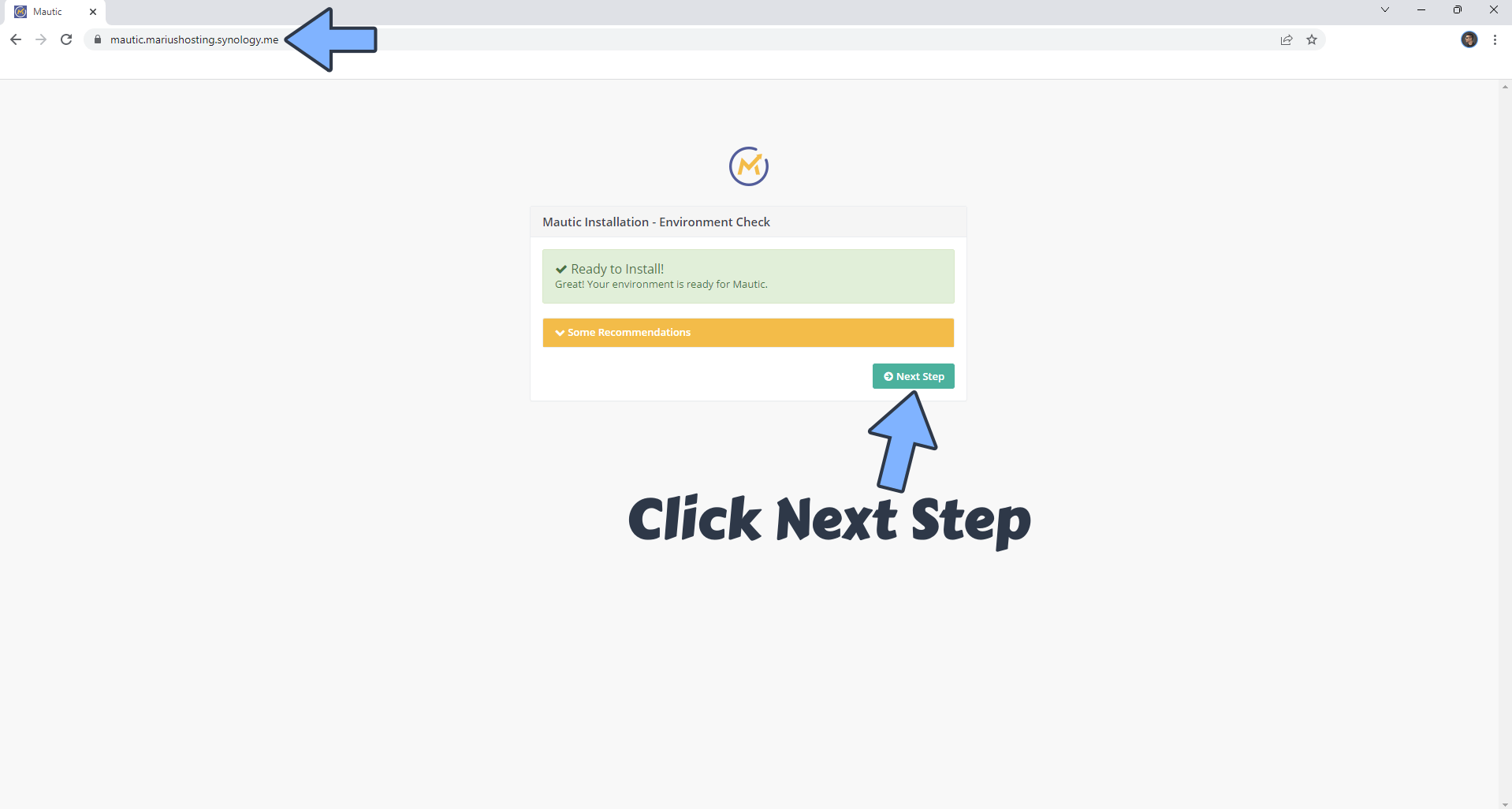
STEP 19
In the Database Password field type in mauticpass then click Next Step. Follow the instructions in the image below.
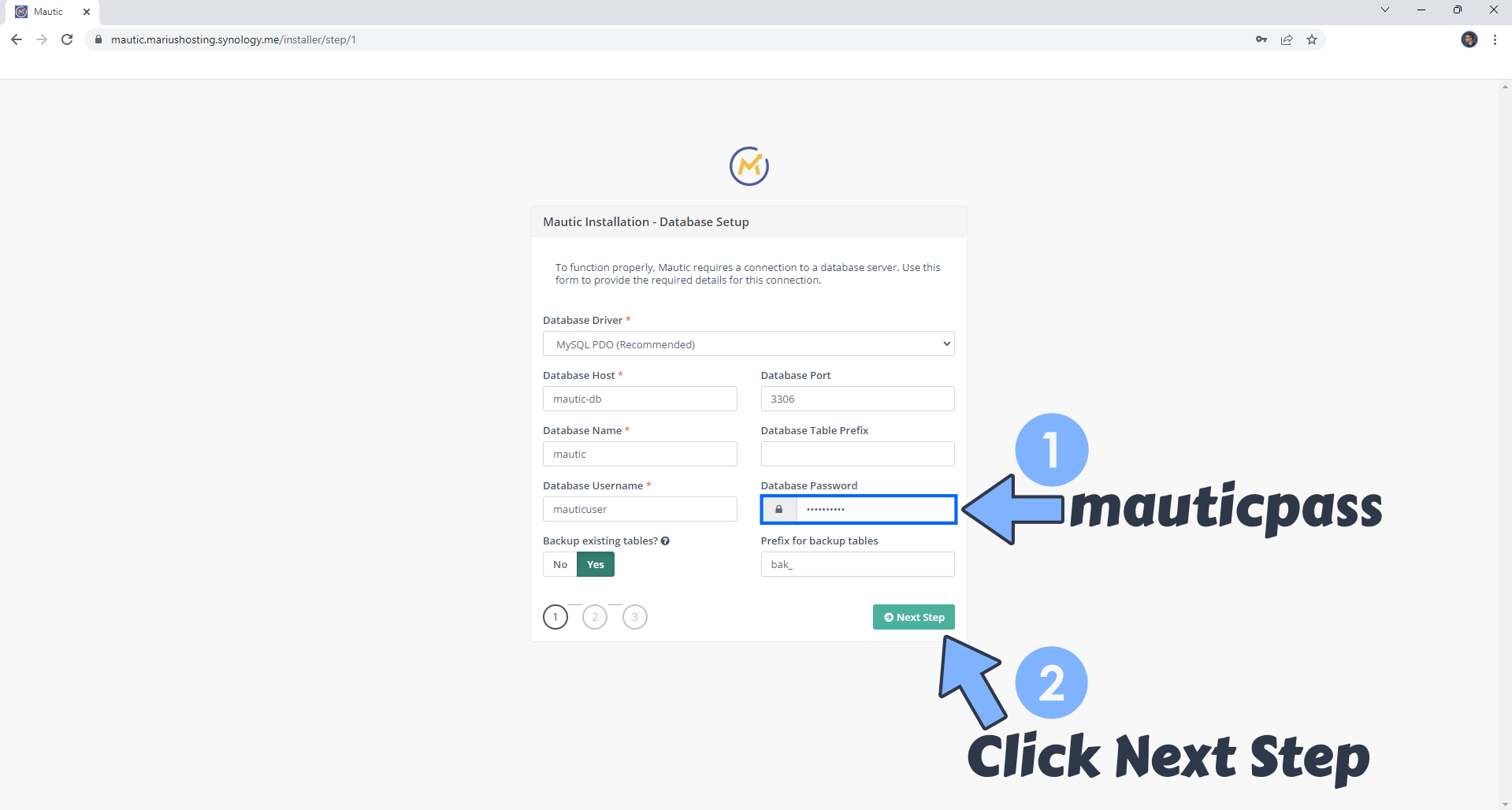
STEP 20
After you click Next Step at STEP 19, you need to wait a few seconds until the database is created. No action required.
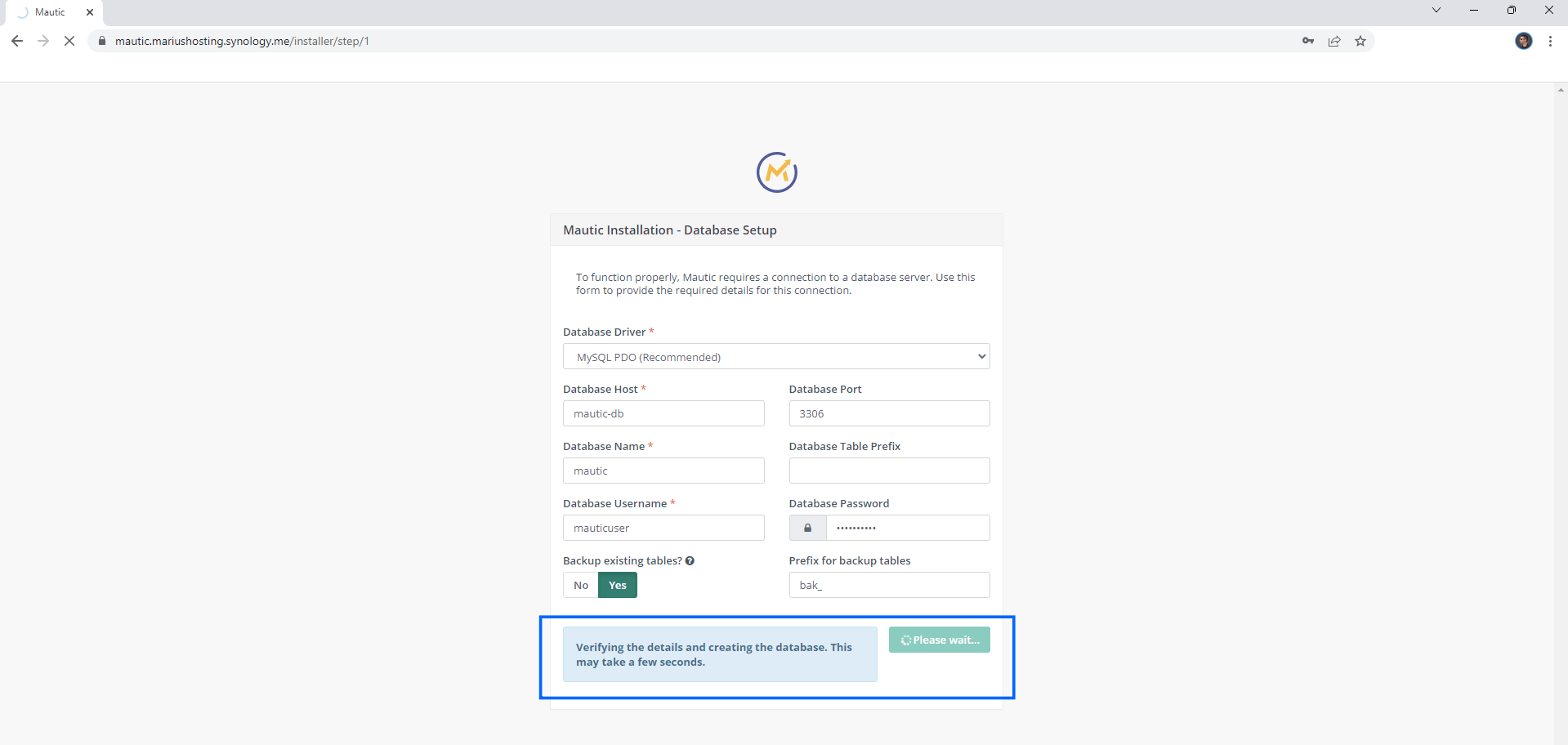
STEP 21
Type in your own Admin Username, Admin Password, First name, Last name and E-mail Address. Click Next Step. Follow the instructions in the image below.
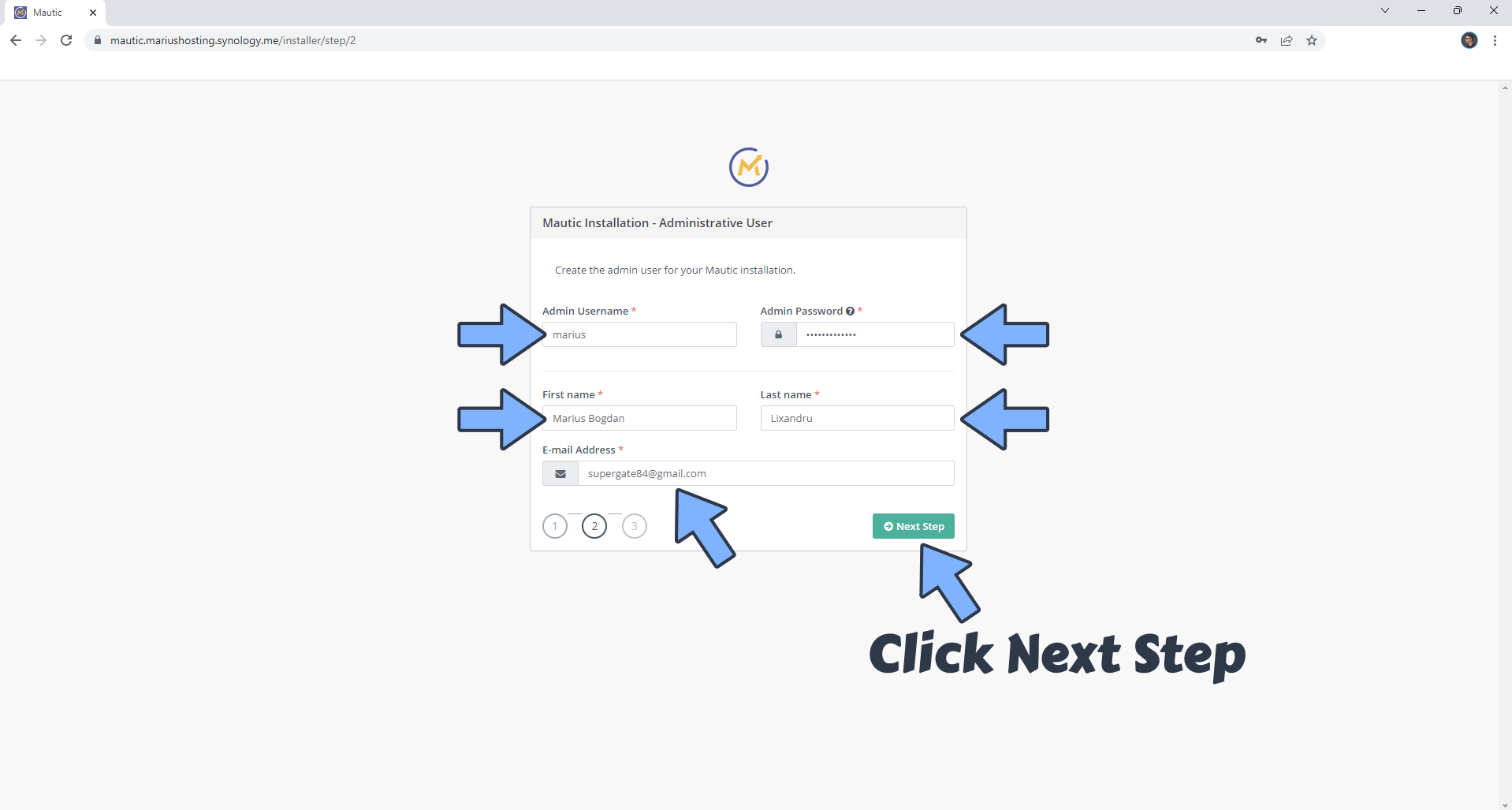
STEP 22
Add your own Mailer transport (SMTP) or click Next Step to add it later. Follow the instructions in the image below.
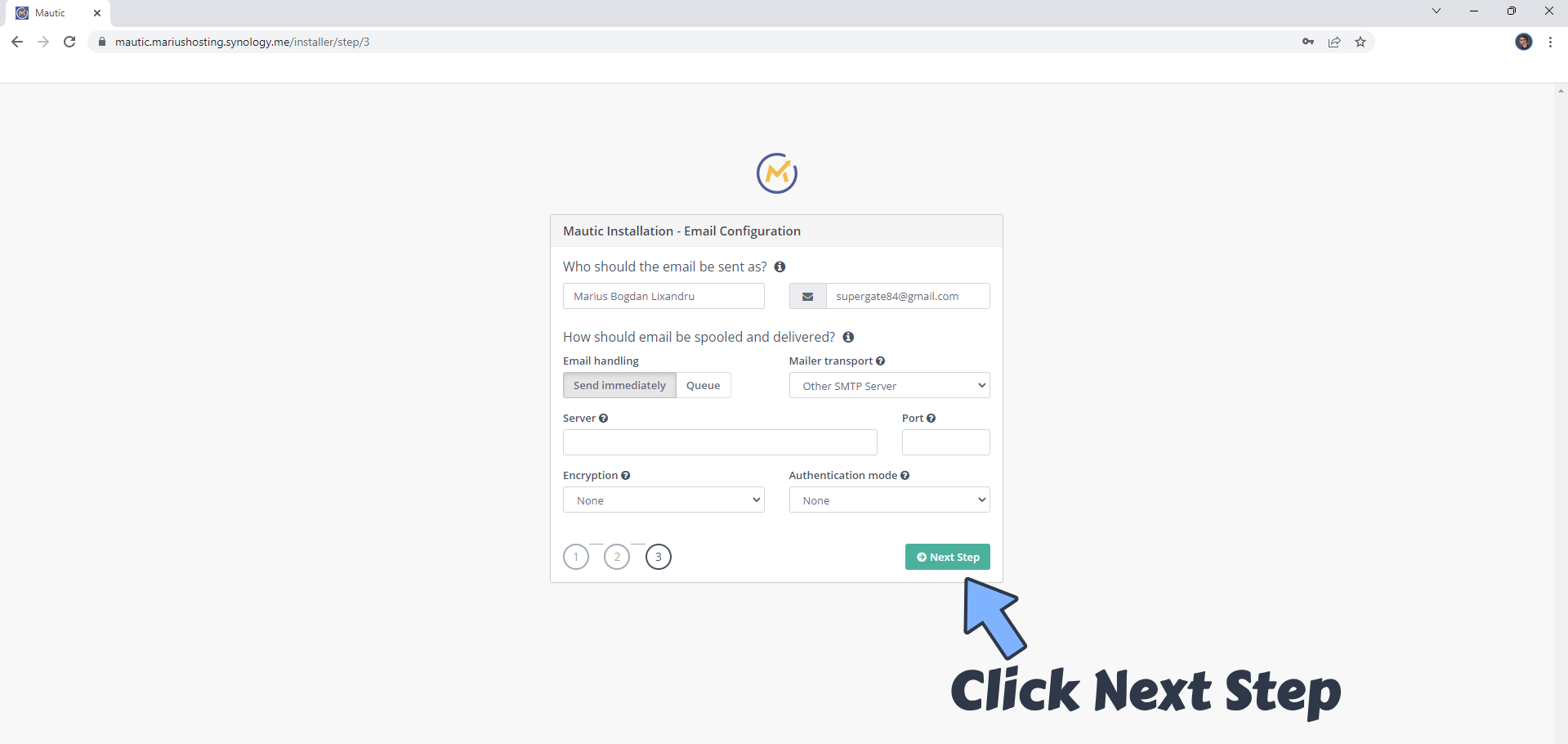
STEP 23
Log in to your Mautic account. Type in your own Admin Username and Password that you have previously created at STEP 21. Click login. Follow the instructions in the image below.
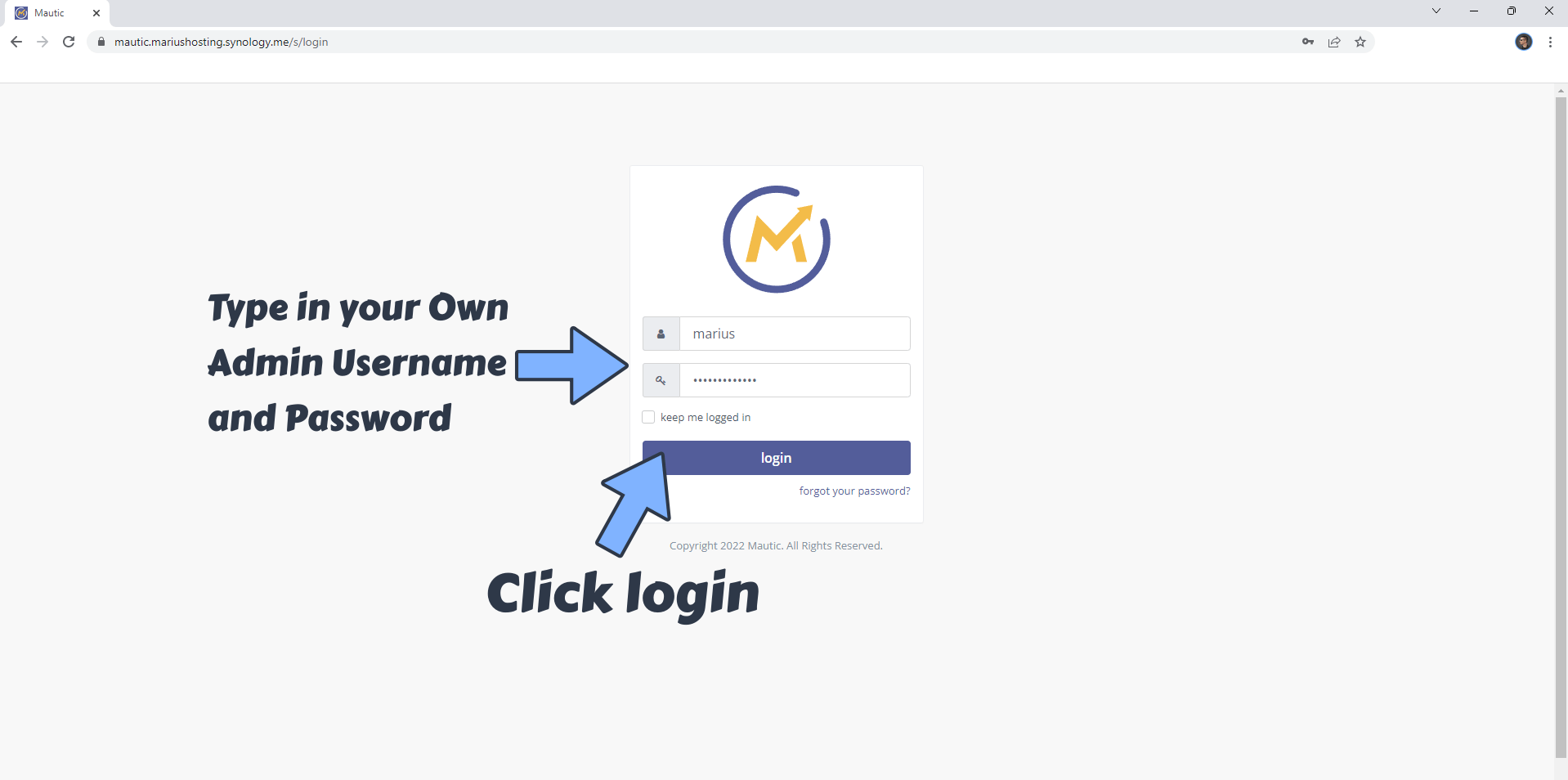
STEP 24
Welcome to your Mautic Dashboard! At the top right of the page click on the little gear icon to access the Settings. Follow the instructions in the image below.
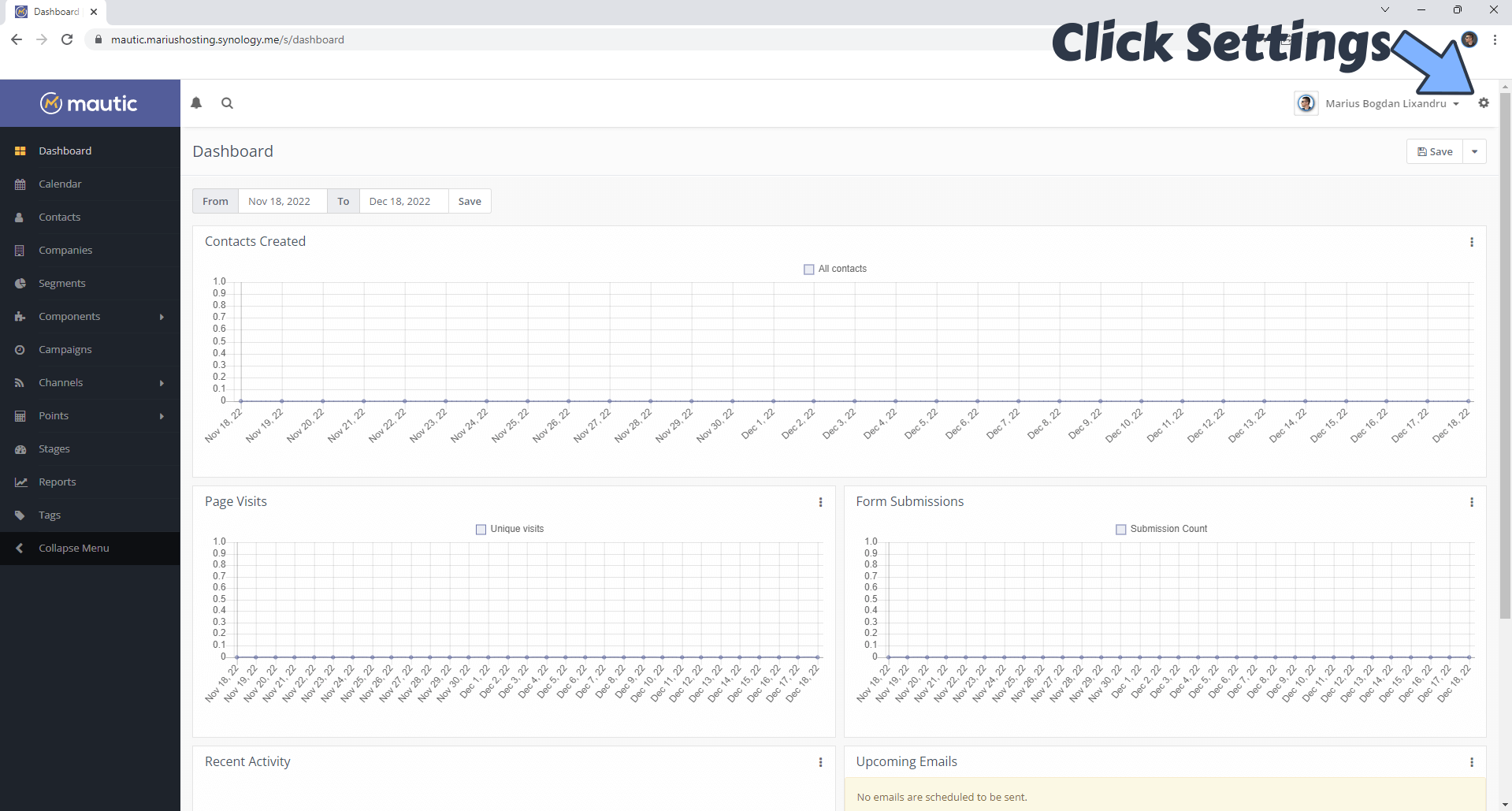
STEP 25
After you access the Settings, select Configuration from the right menu. Change the Site URL and add https instead of http, then click Save. Follow the instructions in the image below.
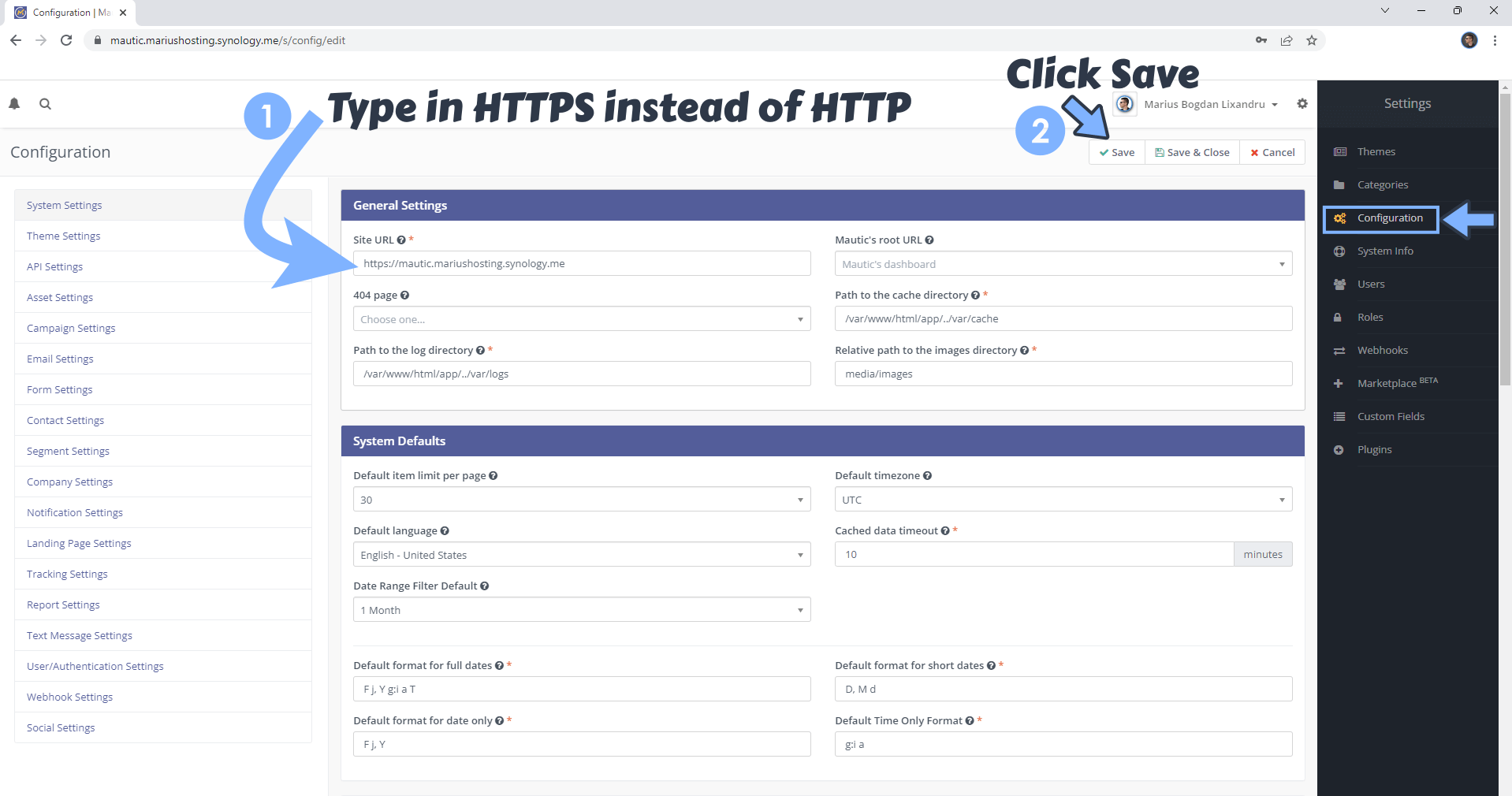
STEP 26
Follow my Step by step guide on how to Set Up Email Notifications on Mautic.
STEP 27
Download (click on the blue link below) to download the Mautic 5.1 Docker Compose stack. 🔒Note: Support my work to unlock the password. You can use this password to download any file on mariushosting forever!
Enjoy Mautic!
If you encounter issues by using this container, make sure to check out the Common Docker issues article.
Note: Make sure RULE 5 and RULE 6 is correctly applied on your Synology NAS Firewall configuration.
Note: Find out how to update the Mautic container with the latest image.
Note: How to Back Up Docker Containers on your Synology NAS.
Note: Can I run Docker on my Synology NAS? See the supported models.
Note: How to Free Disk Space on Your NAS if You Run Docker.
Note: How to Schedule Start & Stop For Docker Containers.
Note: How to Activate Email Notifications.
Note: How to Add Access Control Profile on Your NAS.
Note: How to Change Docker Containers Restart Policy.
Note: How to Use Docker Containers With VPN.
Note: Convert Docker Run Into Docker Compose.
Note: How to Clean Docker.
Note: How to Clean Docker Automatically.
Note: Best Practices When Using Docker and DDNS.
Note: Some Docker Containers Need WebSocket.
Note: Find out the Best NAS Models For Docker.
Note: Activate Gmail SMTP For Docker Containers.
This post was updated on Sunday / September 14th, 2025 at 5:08 PM
